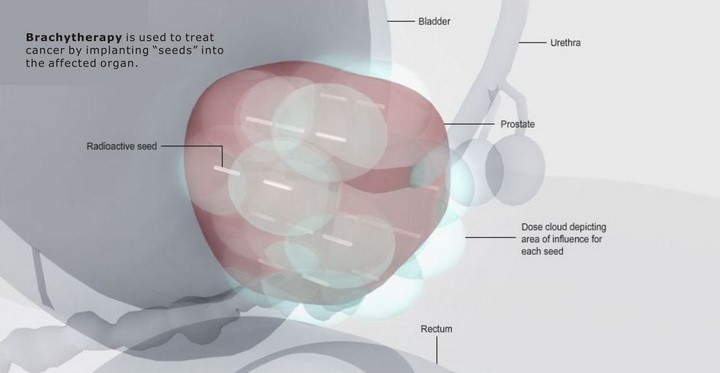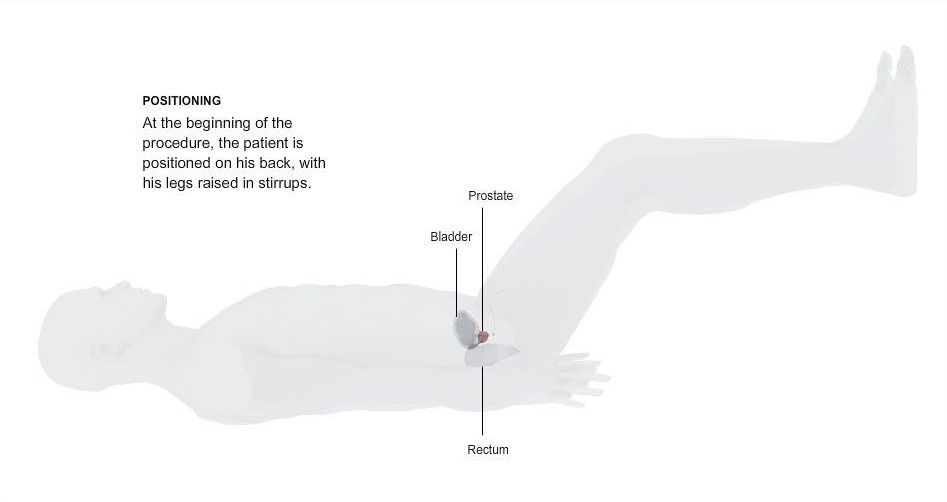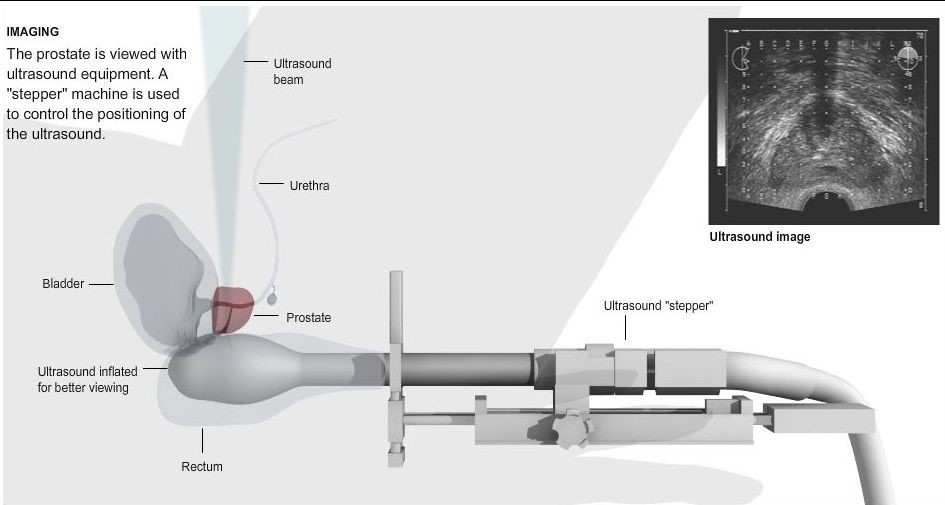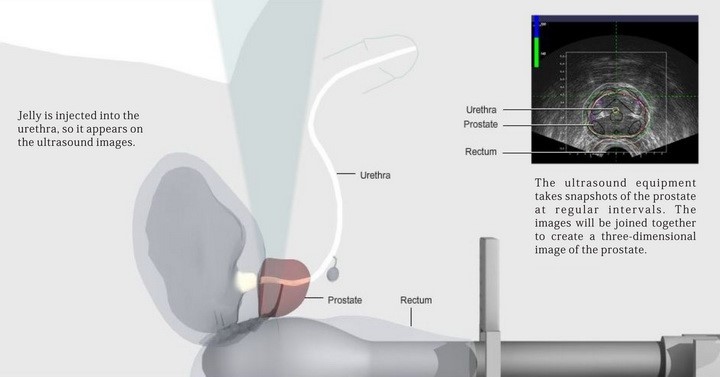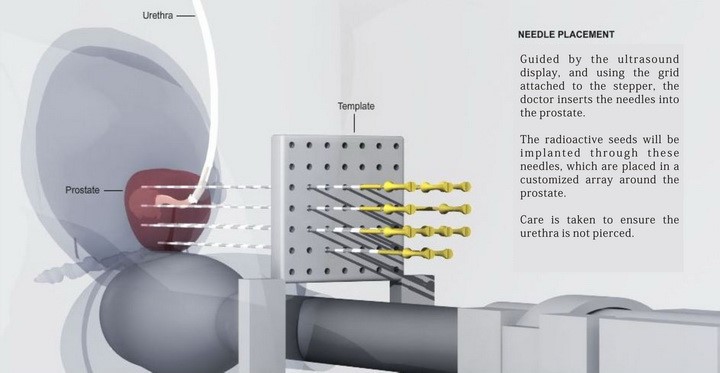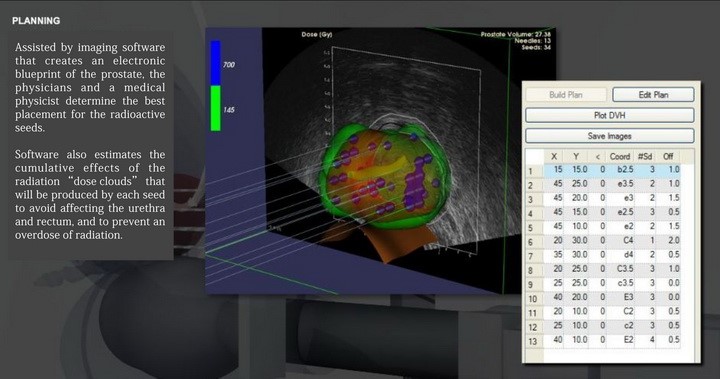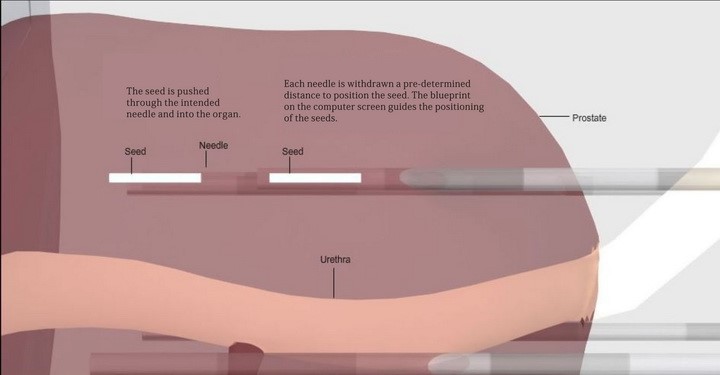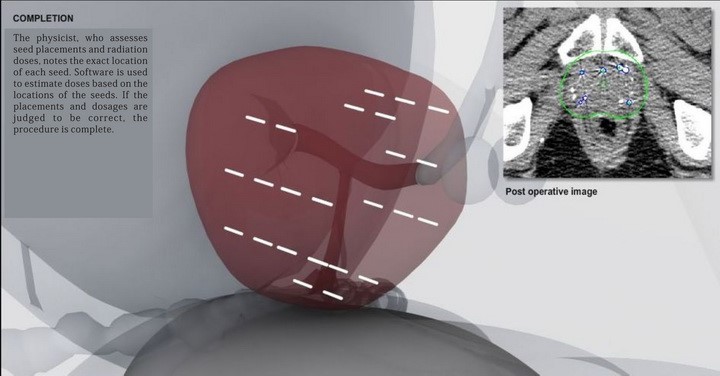Brachytherapy is a form of radiotherapy in which radioactive seeds are inserted directly into tumors. It is an effective minimally invasive technique in the treatment of malignant tumors.125 iodine seeds are commonly used, and their half-life is 59 days. Iodine seeds are often implanted into tumors or tissues that may be invaded by the tumor, or into lymphatic ducts or lymph nodes where the tumor has metastasized, under ultrasound or CT-guided percutaneous (minimally invasive) or surgical procedures. In the process of iodine particle decay, low-dose gamma-rays with short range are emitted, which can continuously irradiate the tumor tissue without interruption, and can kill the tumor cells with fission at different stages and the hypoxic cells around the tumor. Therefore, the tumor can be effectively controlled, which lower the rate of recurrence and metastasis.
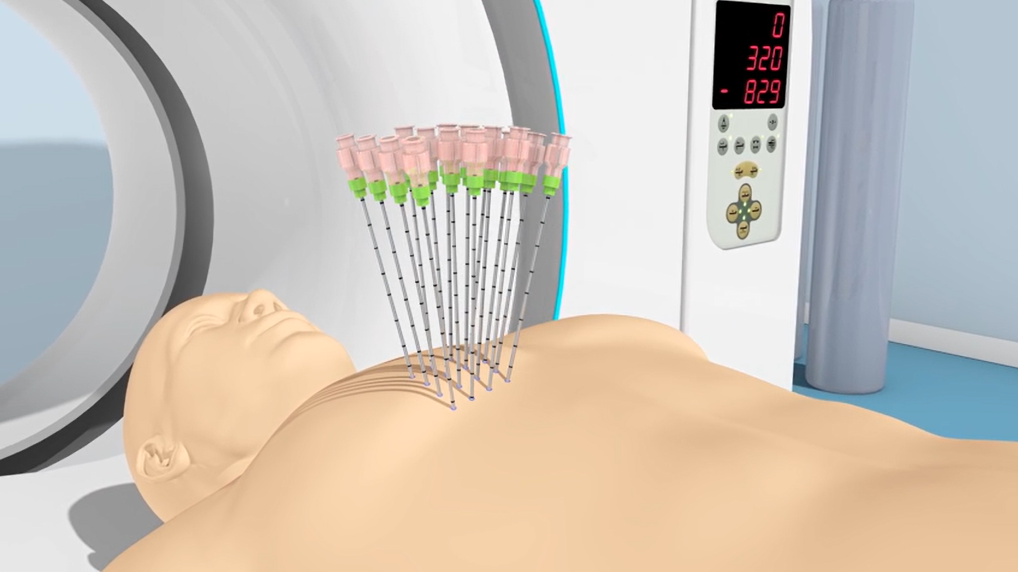
Method
A special computer planning system is used to construct a three-dimensional treatment plan based on a CT or MRI image to calculate the radiation dose needed to kill the cancer cells, thereby determining the range and number of seeds.
How is an implant perdormed?
Before an implantation, an ultrasound volume study is done to see the size and location of the cancerous mass as well as the surrounding organs. During the pre-planning stage, a predetermination is made of how many seeds a patient will need and exactly where they should be placed; these details are based on the size and shape of the cancerous mass. At the beginning of the implantation, the patient will be given local anesthesia. To guide the precise placement of the seeds, an ultrasound probe is placed on the cancerous mass to obtain an image of the mass. Usually 20 to 100 seeds are placed inside needles that are inserted into the masses. The ultrasound probe ensures that the needles are guided with maximum accuracy based on the plan.
Advantages
1. Brachytherapy is a local procedure. It does not expose the entire body to radiation. Due to the large radiation area, large radiation dose penetrating through the human body, the conventional radiotherapy does great damage to the normal tissue structure. However, brachytherapy has obvious advantages: small dose of internal radiation, longer effect time, more accurate treatment location, even local effect on tumor, small radiation radius, and minimal damage to surrounding normal tissues.
2. The diameter of iodine seeds is only 1.7cm; the most energy of seeds is absorbed by the tumor tissue.
3. The seeds cannot be absorbed by body or excreted out of body. Thus, it is not harmful to the people near the patient or the surrounding environment.
4. The iodine seeds irradiate tumor tissue directly, and the local radiation dose is much higher than that of normal tissue, which can kill tumor cells to the maximum extent and cause little damage to normal tissue and sensitive tissue.
5. Continuous and low-dose repeated irradiation can significantly improve the biological effect on tumor tissue and completely destroy the DNA double strands.
6. The radioactive source is always stored in a special container, and the operation is safe and easy to protect without direct contact with seeds.
7. It can be used as a supplement to conventional radiotherapy and a means of synergistic therapy to achieve better therapeutic effect.
Side Effects
There is little discomfort after the implantation. This symptom usually goes away in a few days. Some men with prostate cancer may experience discomfort while urinating, or the need to urinate more frequently. These symptoms usually begin 1 to 2 weeks after implantation and gradually decrease over time. Drinking lots of fluids and avoiding caffeine and alcohol may help relieve these symptoms. A small percentage of men, particularly those who have had previous prostate surgery, may experience incontinence. Impotence may also occur in some men, particularly those over the age of 70. However, the rates of impotence and incontinence are lower with iodine-125 seeds than with other treatments.
Indication
As a primary or supplementary modality, brachytherapy can be used for: prostate cancer, tumors of soft tissue (sarcoma), brain cancer (glioma), breast cancer, pancreatic cancer, liver cancer, tongue cancer, oral cancer, pharyngeal cancer, nasopharyngeal cancer, cervical cancer, ovary cancer, thyroid cancer, metastatic lymph nodes, etc.
Brachytherapy is often used in combination with cryosurgery. More details shown as follows:
1.For untreated primary tumors or tumors that are not sensitive to conventional chemoradiotherapy, such as prostate cancer, brachytherapy can inhibit tumor growth, achieve the same or better results as conventional treatment, and retain its physiological functions;
2. Tumors that require preservation of vital functional tissue or surgery that involve vital organs, such as deep brain tumors;
3. For cases unwilling to undergo radical surgery, such as thyroid cancer, cervical cancer, etc.
4. The seeds have the similar function of landmine to prevent the local and regional spread of the tumor, enhance the curative effect of preventive implantation, and prevent recurrence.
5. Metastatic tumor focus or postoperative solitary tumor metastasis, such as multiple metastatic tumors in the lung;
6. Tumors that cannot be removed surgically due to factors such as physical condition and tumor location, such as giant liver cancer and nasopharyngeal cancer;
7. For cases with poor external irradiation effect or failure or insufficient external irradiation treatment dose, as a supplement to the local dose;
8. Palliative treatment for advanced tumors can effectively control tumor growth, maintain organ function and alleviate pain.
The following is an example of how brachytherapy would be performed on prostate cancer:
